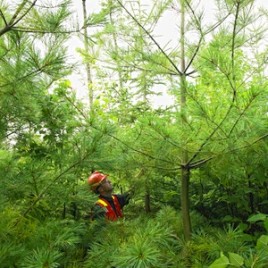Researchers have found a new source for a fungus-fighting chemical: the pine trees and blueberry bushes of the Acadian forest. Griseofulvin is a compound originally isolated from a mould in the same family as those which produce penicillin. It’s used to fight fungal infections in humans and animals, but has also been used as a fungicide […]
Tag: biology
Predicting species tolerance to pesticides
A new computer model could help biologists predict how various species will respond to pesticides. Because of varying responses to pesticides between species – including their tendency to develop tolerance – it’s costly and difficult not only to judge their potential effectiveness but also to manage the unintended consequences in non-target species. The new model […]
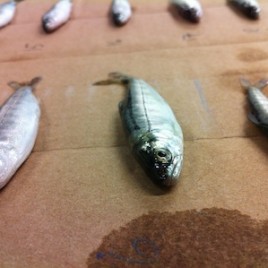
How salmon evolve to beat the heat
Researchers have discovered a link between egg size of chinook salmon and their ability to deal with warmer temperatures. The team captured spawning salmon and measured examined the genetic and maternal effects acting on the ability of offspring to tolerate heat; they found that mothers with larger eggs have more thermally tolerant offspring. As egg […]
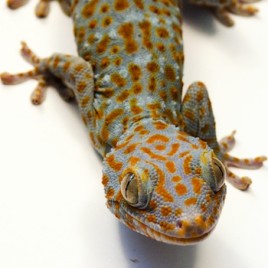
Electrical charges help geckoes stick
Researchers have gained new insight into how geckos are able to walk on almost all surfaces, even upside down. Previous studies have attributed the stickiness of gecko toe pads to a type of force called van der Waals attractions that acts on the tiny hairs – called setae – covering the bottom of geckos’ toe […]
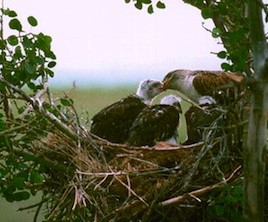
Hawks and owls have trouble as single dads
Some male hawks and owls have trouble adapting their behaviour in order to raise chicks on their own, a new study finds. In breeding pairs, the male is the primary provider of prey for their young while females tear the prey into right-sized chunks and also brood the chicks. (i.e. use their bodies to shield […]
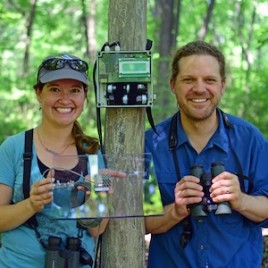
Night-time squawking helps track bird migration
New audio recordings confirm that Lake Erie is not a barrier to bird migration, but that birds pick their routes so as to stay above islands if possible. Migratory birds fly at night, so the team used audio recordings from the north shore of Lake Erie and from Pelee Island — in the middle of […]
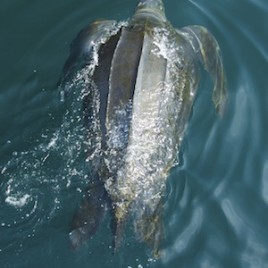
Digesting dinner keeps leatherback turtles warm
Scientists have determined that metabolic heat produced from digesting prey is a key component of what keeps leatherback turtles warm in the cold waters off Canada’s Atlantic coast. Researchers attached temperature monitors to seven leatherback turtles off the coast of Cape Breton and discovered that they cool down during the day (most likely due to […]
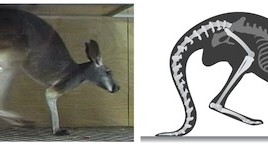
The kangaroo: A five-legged animal
New research shows that when they’re not hopping, kangaroos use their tails as a fifth leg to help propel them forward. Researchers trained five red kangaroos to walk over a force-measuring platform and discovered that rather than simply acting as a prop — as a pair of crutches would — the tail acts like […]
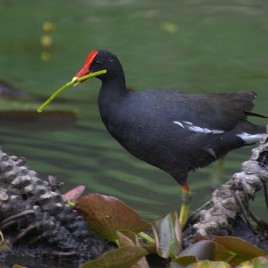
What’s in a bird’s name?
Scientific names of birds are not quite as accurate as one might think, but a new paper describes an online database that can help birders and biologists stay on the same page. A good example of changing names came in 2011, when the species known as the Common Moorhen was reclassified as a different species […]

Oldest human poo shows Neanderthals ate their greens
Chemical analysis of 50,000-year-old fossilized droppings found in Spain suggest that Neanderthals ate more greens than previously thought. Researchers compared the levels of chemicals such as coprostanols – formed from meat in the digestive tract – to those of other chemicals like 5b-stigmastanol, which are digestive products of plants. They conclude that while Neanderthals ate […]
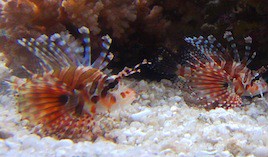
Lionfish hunt in groups
Like their namesakes on land, lionfish demonstrate cooperative hunting, according to a new study. Lab tests showed that lionfish use a unique ‘flared fin’ display to alert other lionfish to the presence of prey. They then work together to herd the prey into smaller areas and take turns striking at the group. This type of […]
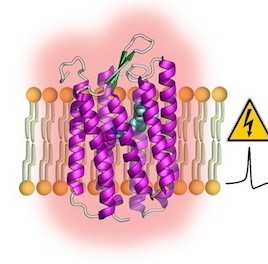
Glowing proteins could help brain imaging
Scientists have developed a new protein capable of glowing red in response to electrical signals in neurons, a tool which could become a boon to brain researchers. The technology could one day be used to produce mice or fish with ‘glowing brains’ that could greatly improve the ability of neuroscientists to understand mental processes. The proteins […]
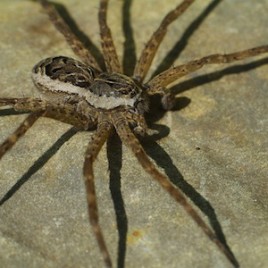
Fish-eating spiders found all over the world
It’s known that some spiders can catch and eat small fish, but a new survey of worldwide sightings shows the phenomenon is more widespread than previously thought. The survey found that spiders from up to five different families prey on fish, and that fish-eating spiders exist on every continent except Antarctica. One species, the striped […]
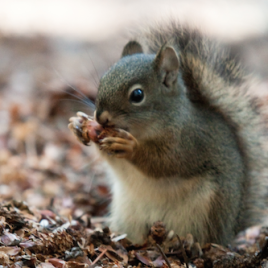
Do seed-eating squirrels impact the whole forest?
A new study shows that trees that store lots of fire-resistant seeds to prepare for forest fires end up attracting more seed-eating red squirrels, which provokes a cascading effect on the ability of forest to grow back after a fire. The study relies on three years of field study in Yellowstone park and applies to […]
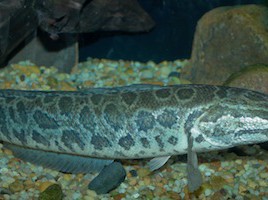
DNA barcoding could help catch invasive snakeheads
A new set of DNA barcodes could help combat the notoriously invasive fish known as snakeheads. Snakeheads are native to Asia and are believed to have been introduced to North American rivers by private collectors dumping their unwanted pets. Identification is difficult because the juveniles and adults can look very different, while fish from different […]

Phone app provides faster assessment of breathing problems
A phone app that requires users to tap the screen after each breath can provide faster assessment of breathing problems, a new analysis shows. Electrical engineers designed an app that measures the space between breaths and can provide a reasonable estimate of breathing rate in as little as 10 seconds. The traditional way to assess […]
